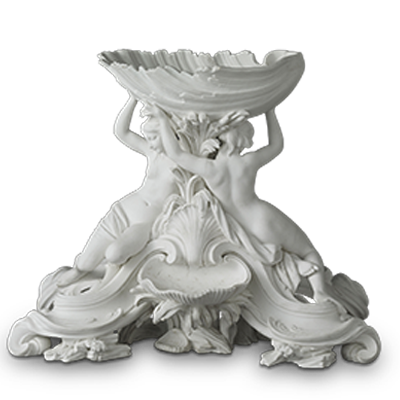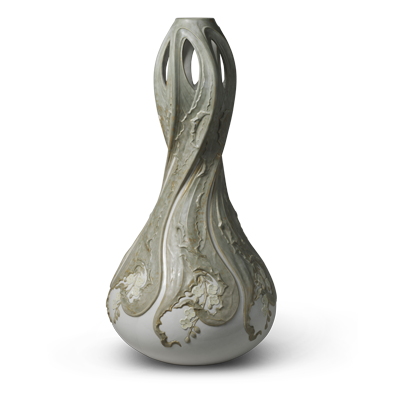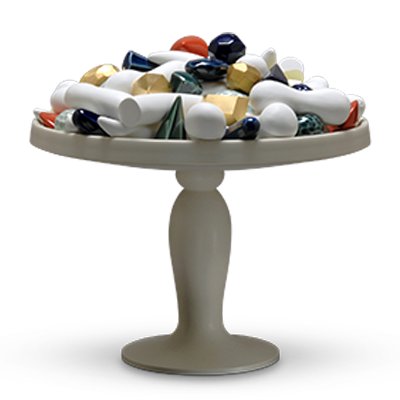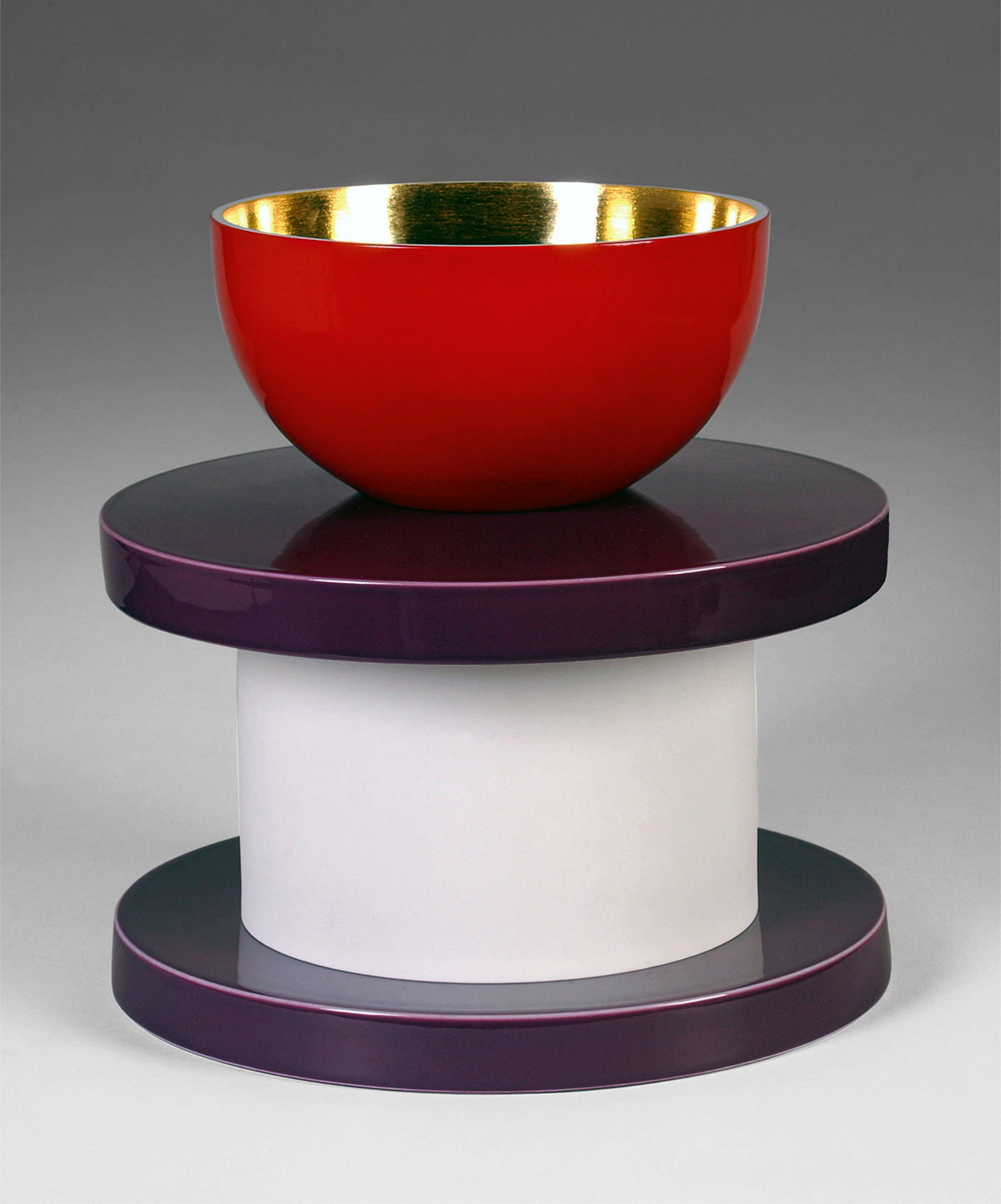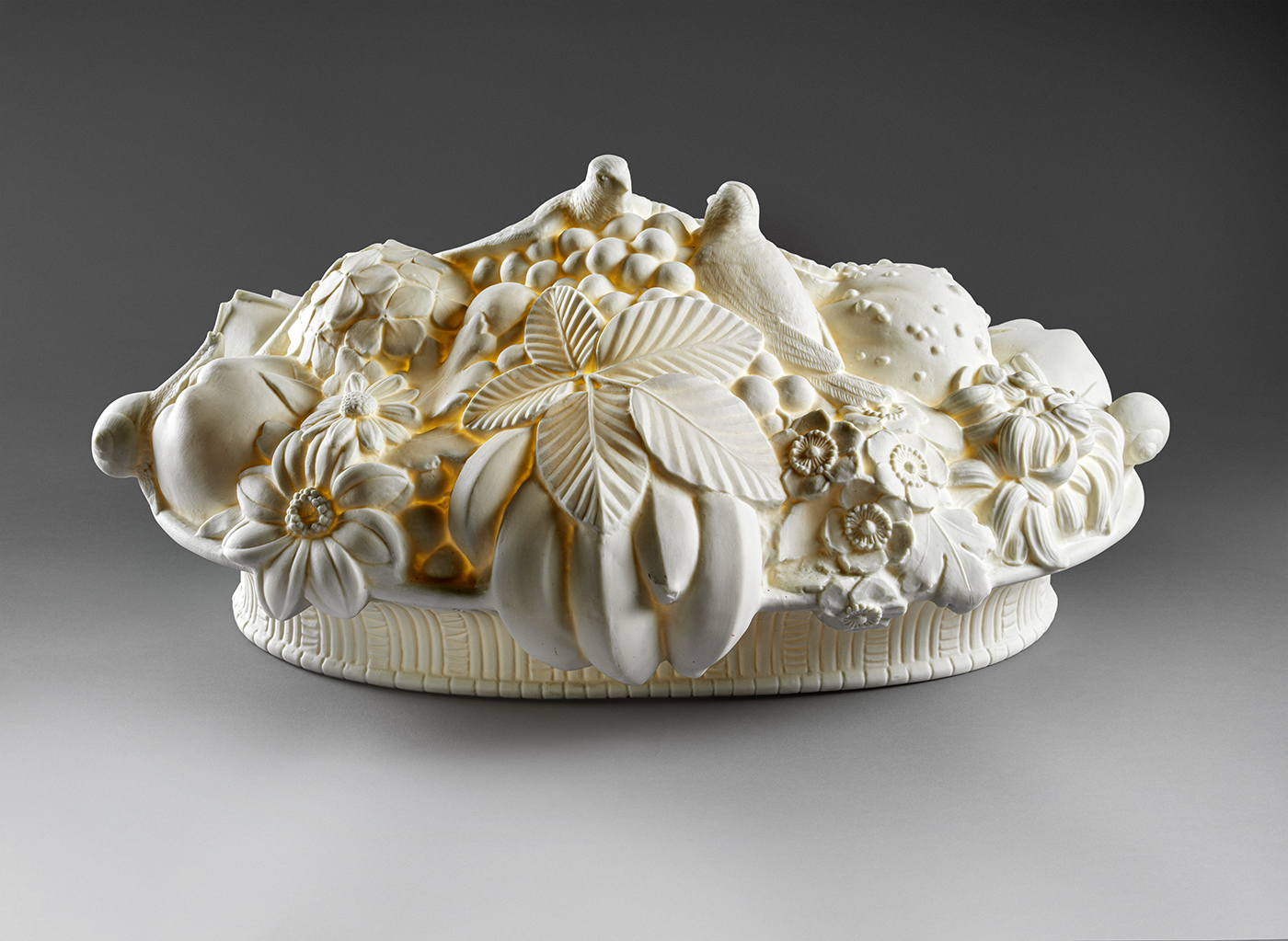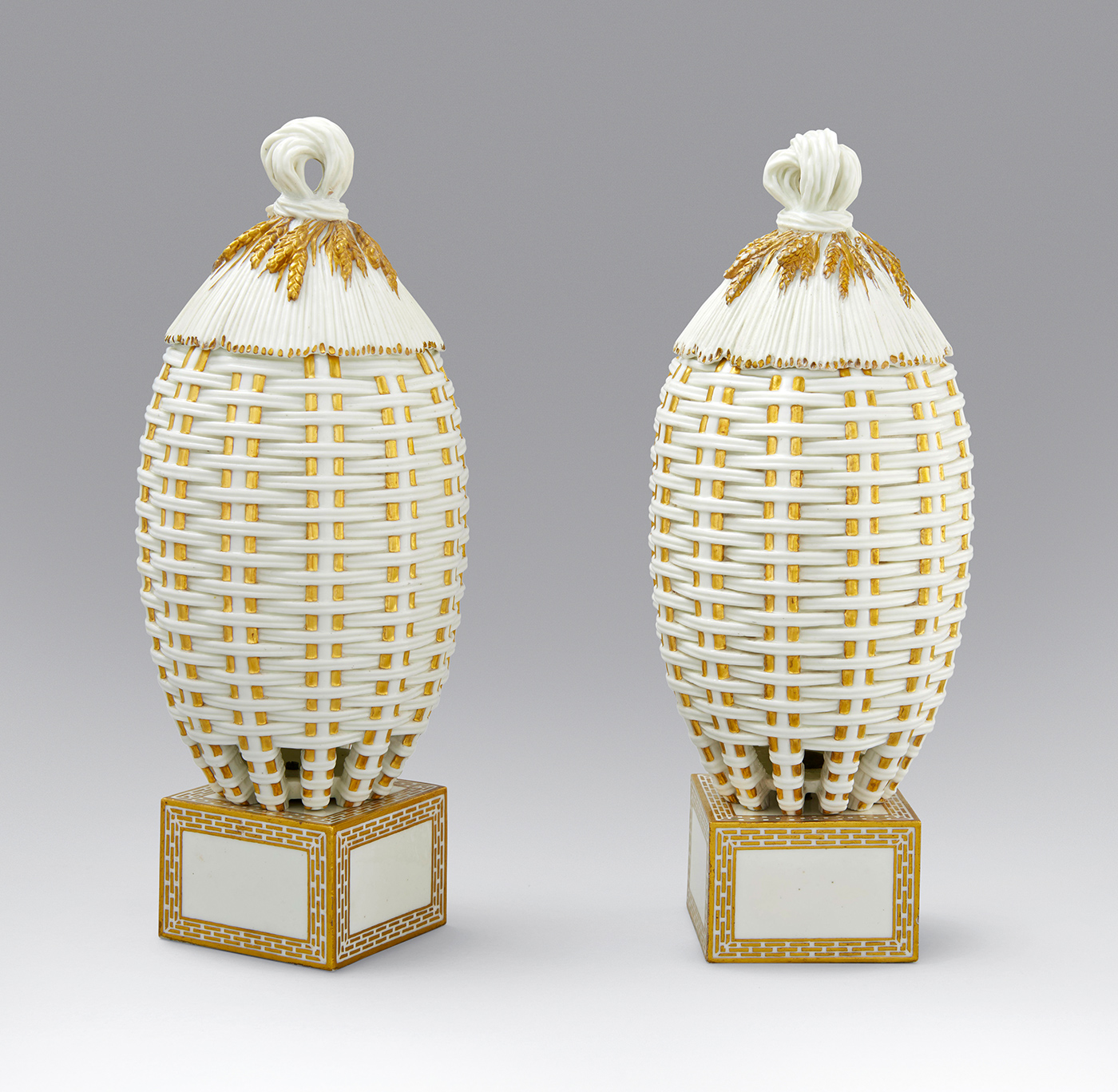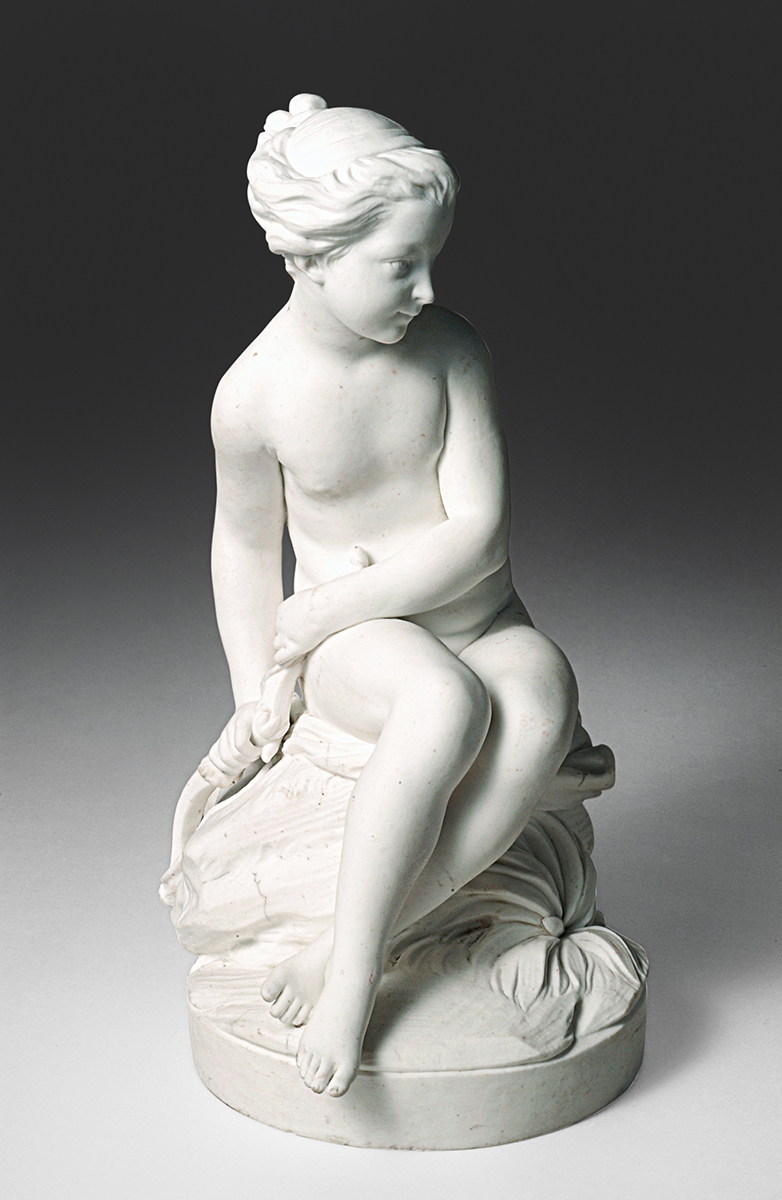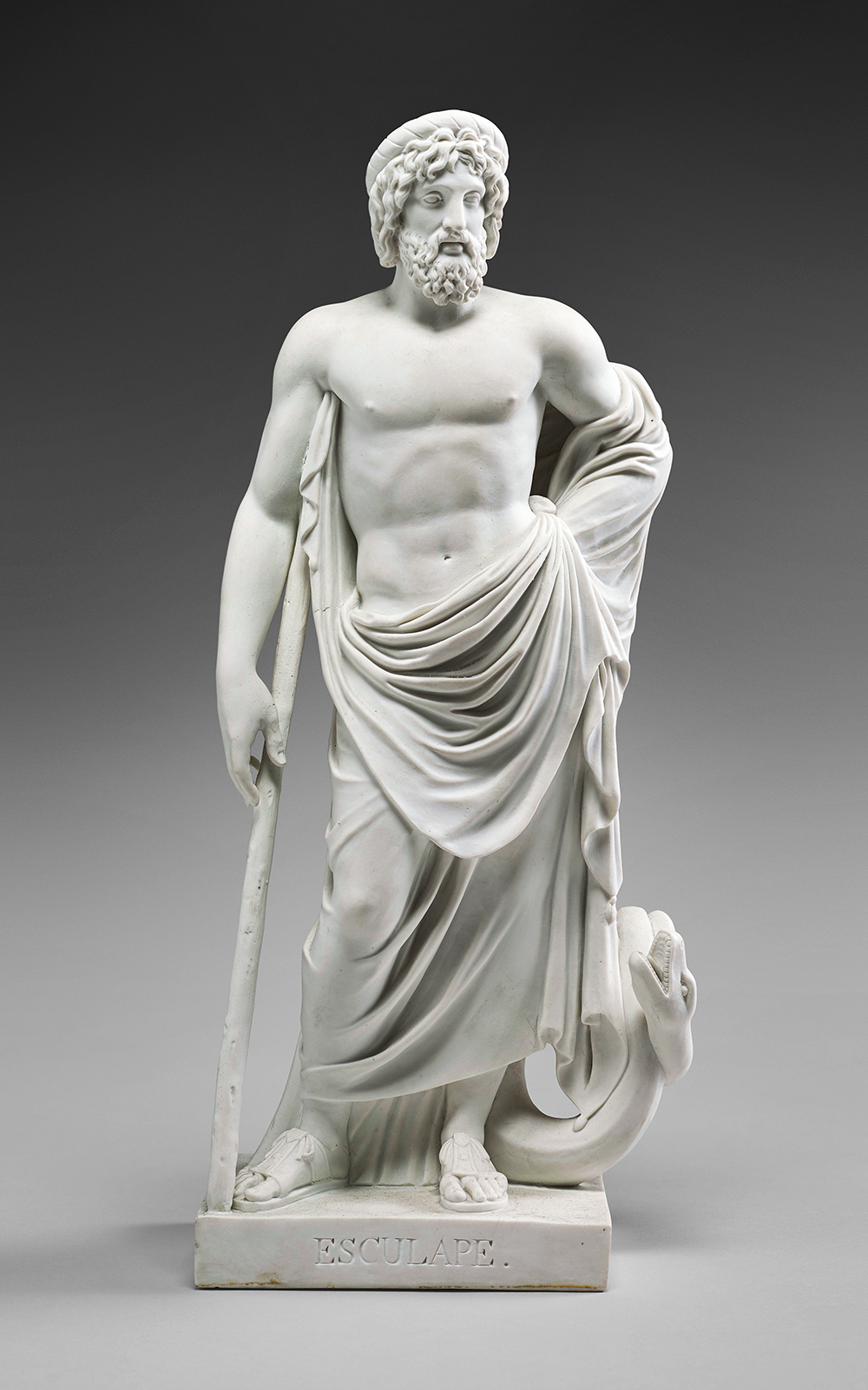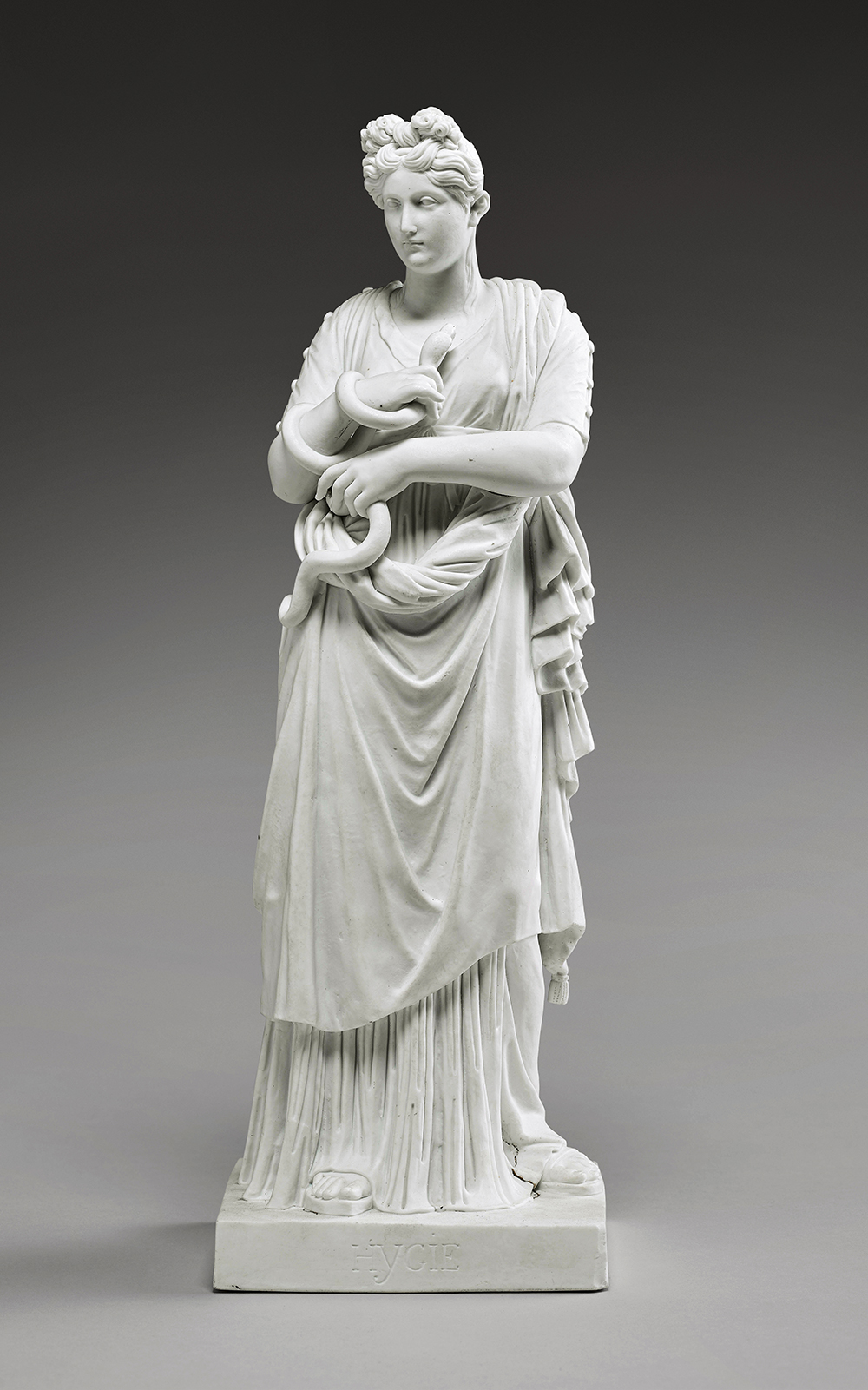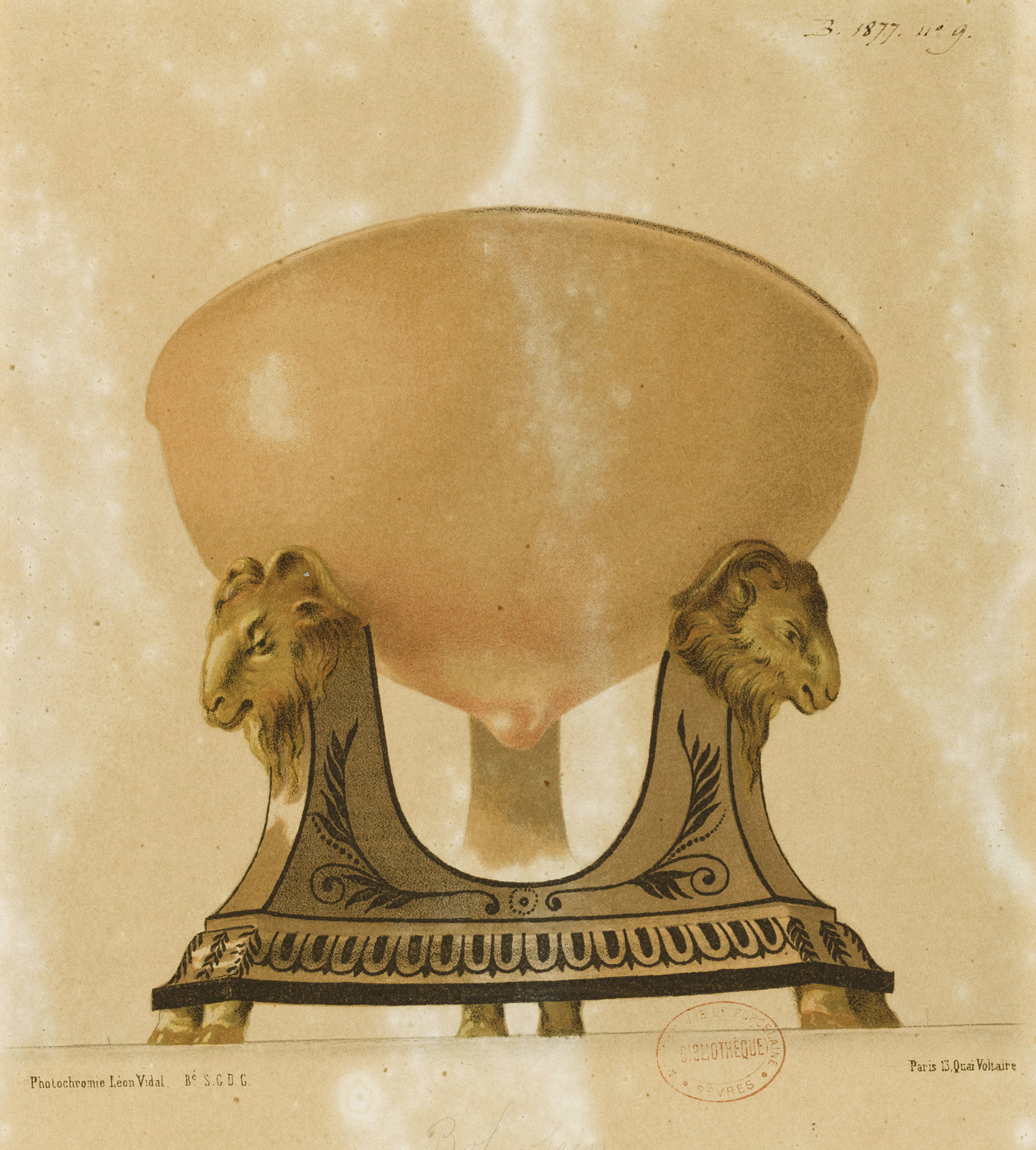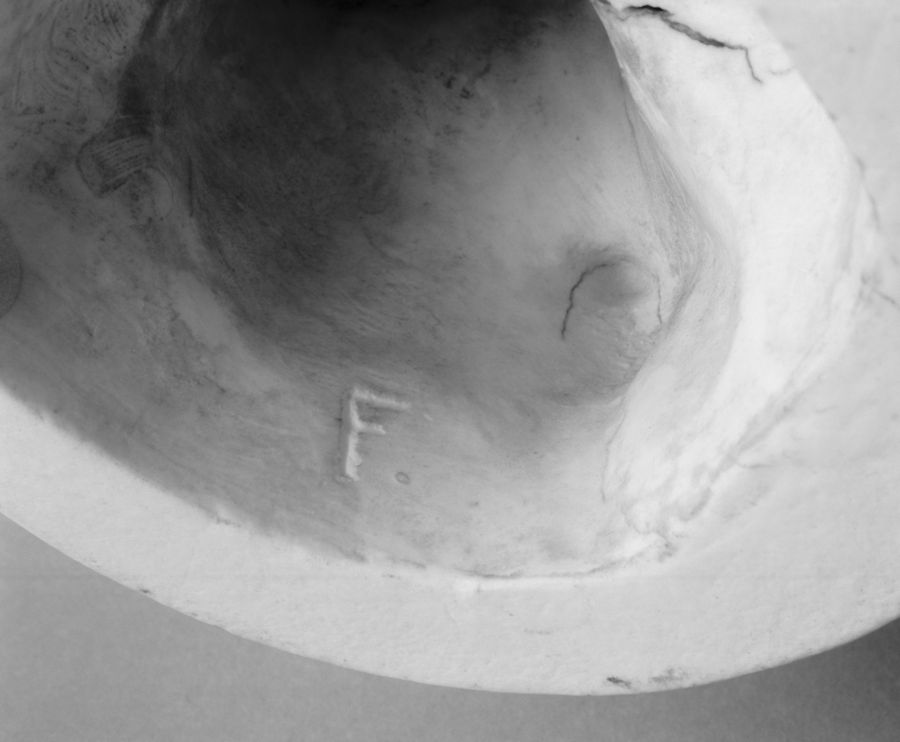Art Deco
When Georges Lechevallier-Chevignard (1873–1945) became the director of the manufactory in 1920, production had been disrupted by World War I and it was necessary to renew the factory equipment and reestablish the practices that had secured its reputation. Despite these difficulties, Lechevallier-Chevignard was an excellent administrator who cultivated relationships with leading artists, designers, and interior decorators of the day, using short-term contracts and internships to attract emerging talent.
In the 1920s the languid curves of Art Nouveau were replaced by the more geometric and stylized forms of the Art Deco movement. Sculptures of animals, some life-size, were popular, especially cats and exotic breeds of dogs. At the 1925 Exposition Internationale des Arts Décoratifs et Industriels Modernes, the international exhibition from which Art Deco takes its name, Sèvres showed sculptures by Octave-Denis-Victor Guillonnet (1872–1967), Pierre Émile Bracquemond (1870–1926), and Jan and Joël Martel (both 1896–1966). These artists took full advantage of the technical innovations made at Sèvres during these years, as well as the many pastes and glazes available. Traditional materials like biscuit, craquelé and enameled porcelain, and earthenware continued to be utilized as well, with sculptures often produced in several different materials.
Art Deco
When Georges Lechevallier-Chevignard (1873–1945) became the director of the manufactory in 1920, production had been disrupted by World War I and it was necessary to renew the factory equipment and reestablish the practices that had secured its reputation. Despite these difficulties, Lechevallier-Chevignard was an excellent administrator who cultivated relationships with leading artists, designers, and interior decorators of the day, using short-term contracts and internships to attract emerging talent.
In the 1920s the languid curves of Art Nouveau were replaced by the more geometric and stylized forms of the Art Deco movement. Sculptures of animals, some life-size, were popular, especially cats and exotic breeds of dogs. At the 1925 Exposition Internationale des Arts Décoratifs et Industriels Modernes, the international exhibition from which Art Deco takes its name, Sèvres showed sculptures by Octave-Denis-Victor Guillonnet (1872–1967), Pierre Émile Bracquemond (1870–1926), and Jan and Joël Martel (both 1896–1966). These artists took full advantage of the technical innovations made at Sèvres during these years, as well as the many pastes and glazes available. Traditional materials like biscuit, craquelé and enameled porcelain, and earthenware continued to be utilized as well, with sculptures often produced in several different materials.
When Georges Lechevallier-Chevignard (1873–1945) became the director of the manufactory in 1920, production had been disrupted by World War I and it was necessary to renew the factory equipment and reestablish the practices that had secured its reputation. Despite these difficulties, Lechevallier-Chevignard was an excellent administrator who cultivated relationships with leading artists, designers, and interior decorators of the day, using short-term contracts and internships to attract emerging talent.
In the 1920s the languid curves of Art Nouveau were replaced by the more geometric and stylized forms of the Art Deco movement. Sculptures of animals, some life-size, were popular, especially cats and exotic breeds of dogs. At the 1925 Exposition Internationale des Arts Décoratifs et Industriels Modernes, the international exhibition from which Art Deco takes its name, Sèvres showed sculptures by Octave-Denis-Victor Guillonnet (1872–1967), Pierre Émile Bracquemond (1870–1926), and Jan and Joël Martel (both 1896–1966). These artists took full advantage of the technical innovations made at Sèvres during these years, as well as the many pastes and glazes available. Traditional materials like biscuit, craquelé and enameled porcelain, and earthenware continued to be utilized as well, with sculptures often produced in several different materials.
Jean Baptiste Gauvenet
Jean Baptiste Gauvenet (worked at Sèvres, 1908–50) was one of the rare staff members of the Sèvres Manufactory whose models for lighting, sculptures, and vases were produced in several editions. In 1925 he sculpted the models for a set of three female figures in Art Deco–style dress with fashionable swirling capes. Their ball gowns were inspired by costumes from the Ballets Russes. Drawings created under Lechevallier-Chevignard’s direction for the second dancer’s costume feature a butterfly pattern in keeping with Art Deco textile designs used by celebrated couturier Paul Poiret. Following the long tradition of colored sculpture at Sèvres, each dancer was produced in a small series.
Jean Baptiste Gauvenet (worked at Sèvres, 1908–50) was one of the rare staff members of the Sèvres Manufactory whose models for lighting, sculptures, and vases were produced in several editions. In 1925 he sculpted the models for a set of three female figures in Art Deco–style dress with fashionable swirling capes. Their ball gowns were inspired by costumes from the Ballets Russes. Drawings created under Lechevallier-Chevignard’s direction for the second dancer’s costume feature a butterfly pattern in keeping with Art Deco textile designs used by celebrated couturier Paul Poiret. Following the long tradition of colored sculpture at Sèvres, each dancer was produced in a small series.
Glazed and decorated pâte nouvelle porcelain
Manufacture et Musée nationaux, Sèvres, MNC 2012.1.5203 (no. 1); MNC 2012.1.320 (no. 2); MNC 2009.D.324 (no. 3)
Photo © RMN-Grand Palais (Sèvres – Manufacture et musée nationaux) / Thierry Ollivier
Graphite, gouache, and wash on paper
Manufacture et Musée nationaux, Sèvres, MNS 2013.D.7511.12
Photo © Sèvres – Manufacture et musée nationaux, Dist. RMN-Grand Palais / Manzara
Click to enlarge gallery images.
Glazed and decorated pâte nouvelle porcelain
Manufacture et Musée nationaux, Sèvres, MNC 2012.1.5203 (no. 1); MNC 2012.1.320 (no. 2); MNC 2009.D.324 (no. 3)
Photo © RMN-Grand Palais (Sèvres – Manufacture et musée nationaux) / Thierry Ollivier
Graphite, gouache, and wash on paper
Manufacture et Musée nationaux, Sèvres, MNS 2013.D.7511.12
Photo © Sèvres – Manufacture et musée nationaux, Dist. RMN-Grand Palais / Manzara
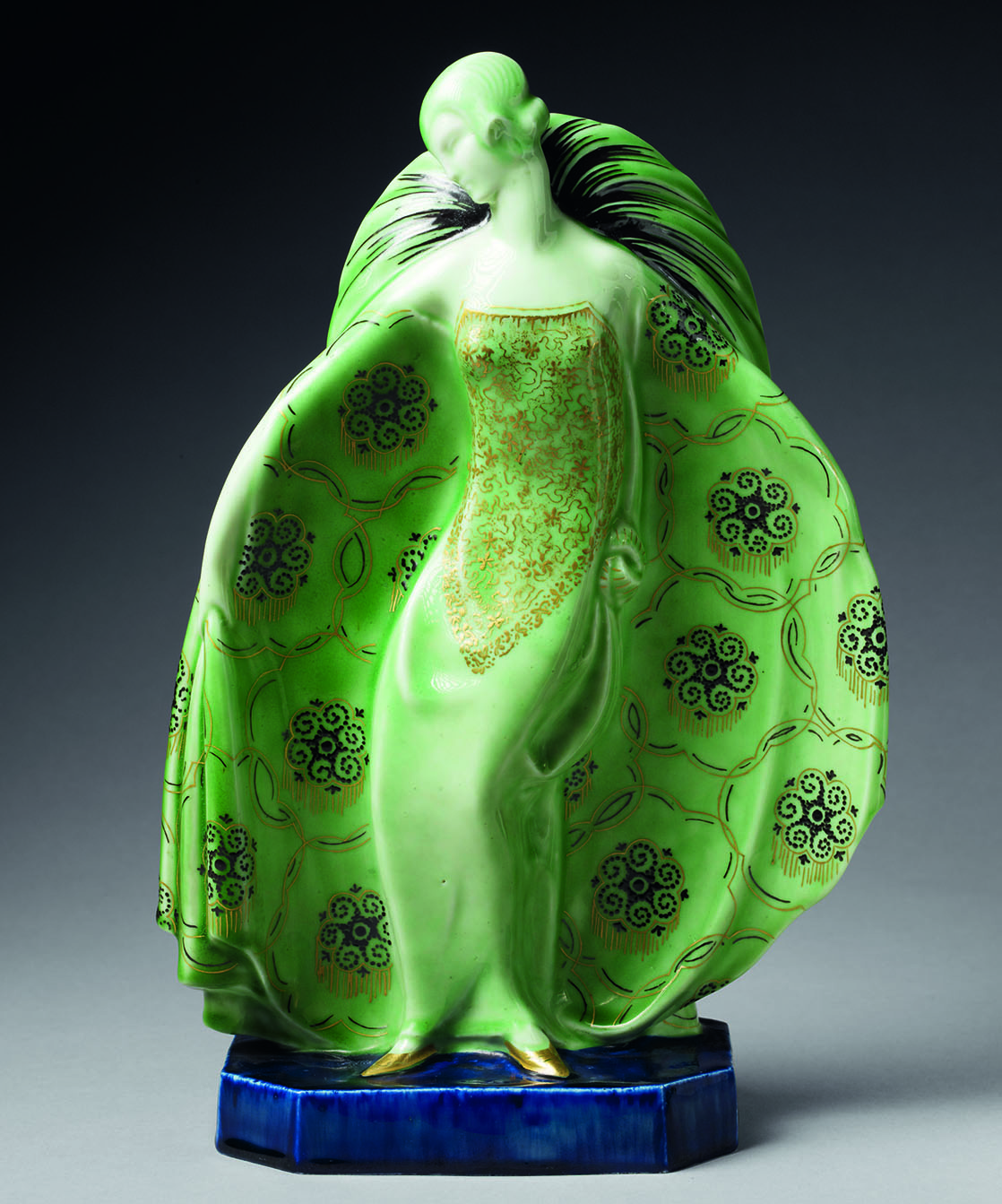

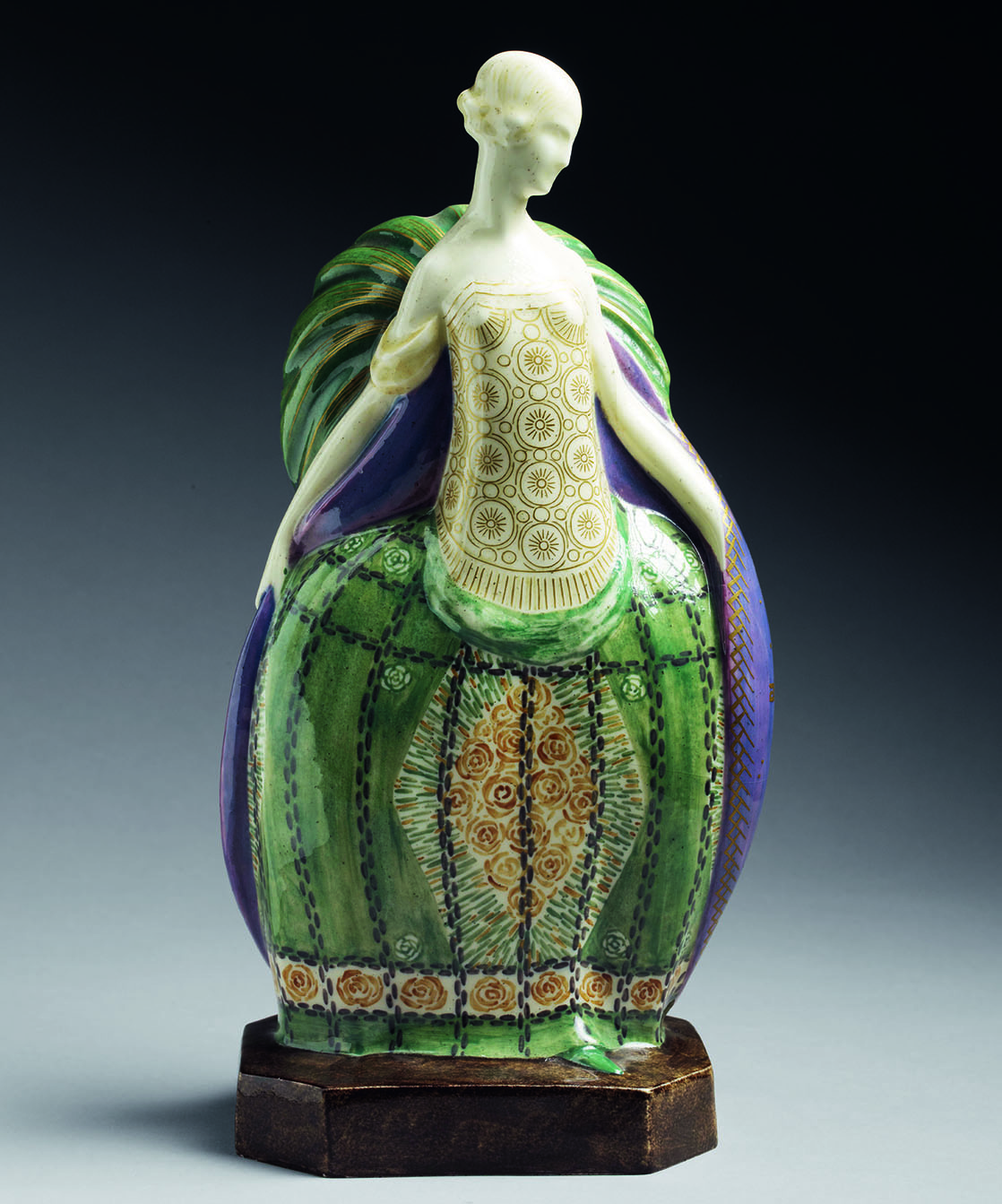
Glazed and decorated pâte nouvelle porcelain
Manufacture et Musée nationaux, Sèvres, MNC 2012.1.5203 (no. 1); MNC 2012.1.320 (no. 2); MNC 2009.D.324 (no. 3)
Photo © RMN-Grand Palais (Sèvres – Manufacture et musée nationaux) / Thierry Ollivier
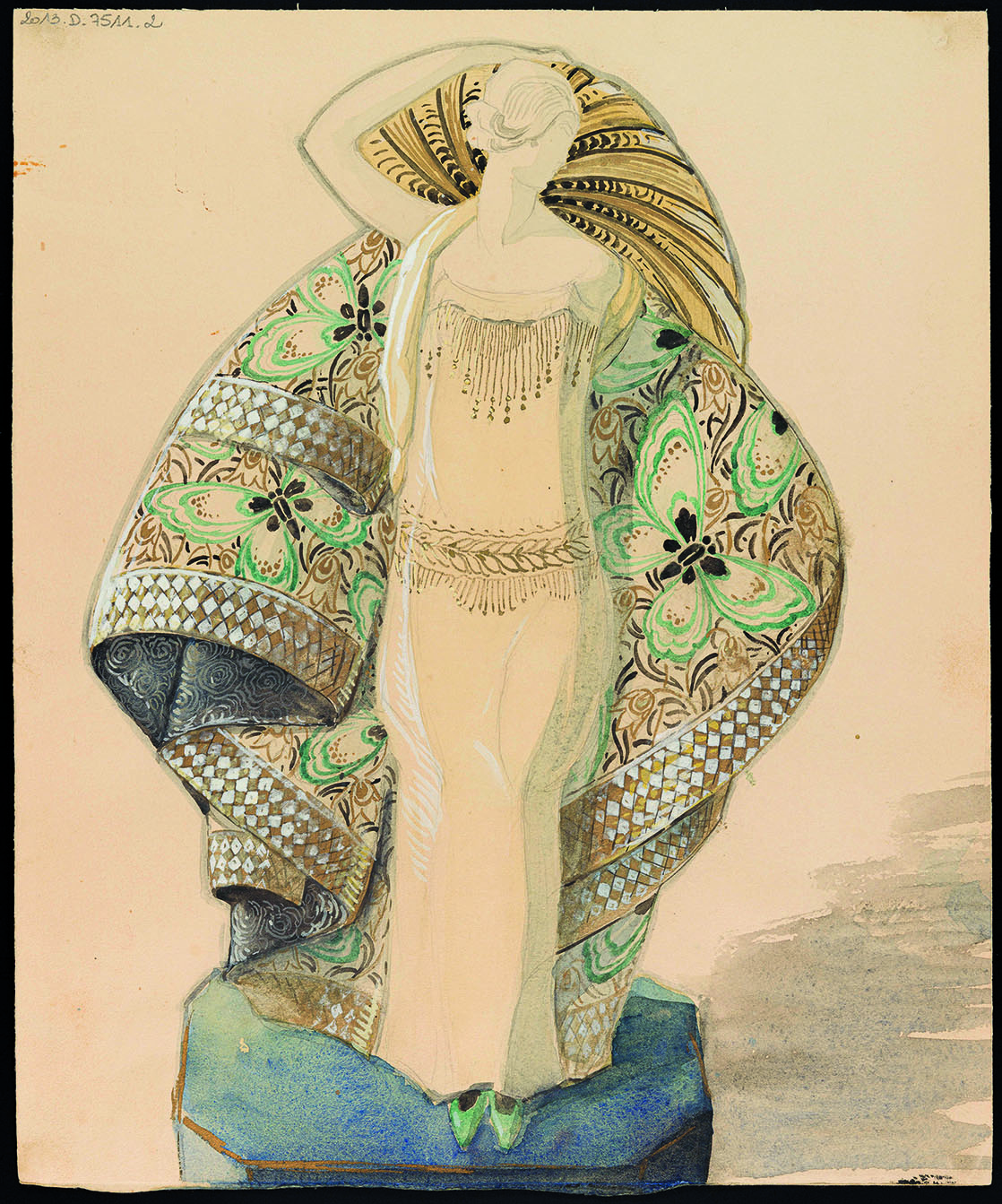
Graphite, gouache, and wash on paper
Manufacture et Musée nationaux, Sèvres, MNS 2013.D.7511.12
Photo © Sèvres – Manufacture et musée nationaux, Dist. RMN-Grand Palais / Manzara
Art Deco Animals
Animal sculptures were all the rage at the Sèvres Manufactory during the Art Deco period. Domestic and exotic animals were often represented with sleek, compact geometric shapes. François Pompon’s Bear and the Martel Brothers’ Cat exemplify a search for simplification and stylization characteristic of the Art Deco movement. Other sculptors took a more lifelike approach to the representation of animals, illustrating the depth of creativity and diversity of the period at Sèvres.
Animal sculptures were all the rage at the Sèvres Manufactory during the Art Deco period. Domestic and exotic animals were often represented with sleek, compact geometric shapes. François Pompon’s Bear and the Martel Brothers’ Cat exemplify a search for simplification and stylization characteristic of the Art Deco movement. Other sculptors took a more lifelike approach to the representation of animals, illustrating the depth of creativity and diversity of the period at Sèvres.
Few low reliefs were made during this period, but there was a growing tendency to produce sculptures with shallow carving and flattened planes, as illustrated here by Louis-Henri Bouchard’s Gazelle, which was created for the 1931 Colonial Exposition in Paris.
Few low reliefs were made during this period, but there was a growing tendency to produce sculptures with shallow carving and flattened planes, as illustrated here by Louis-Henri Bouchard’s Gazelle, which was created for the 1931 Colonial Exposition in Paris.
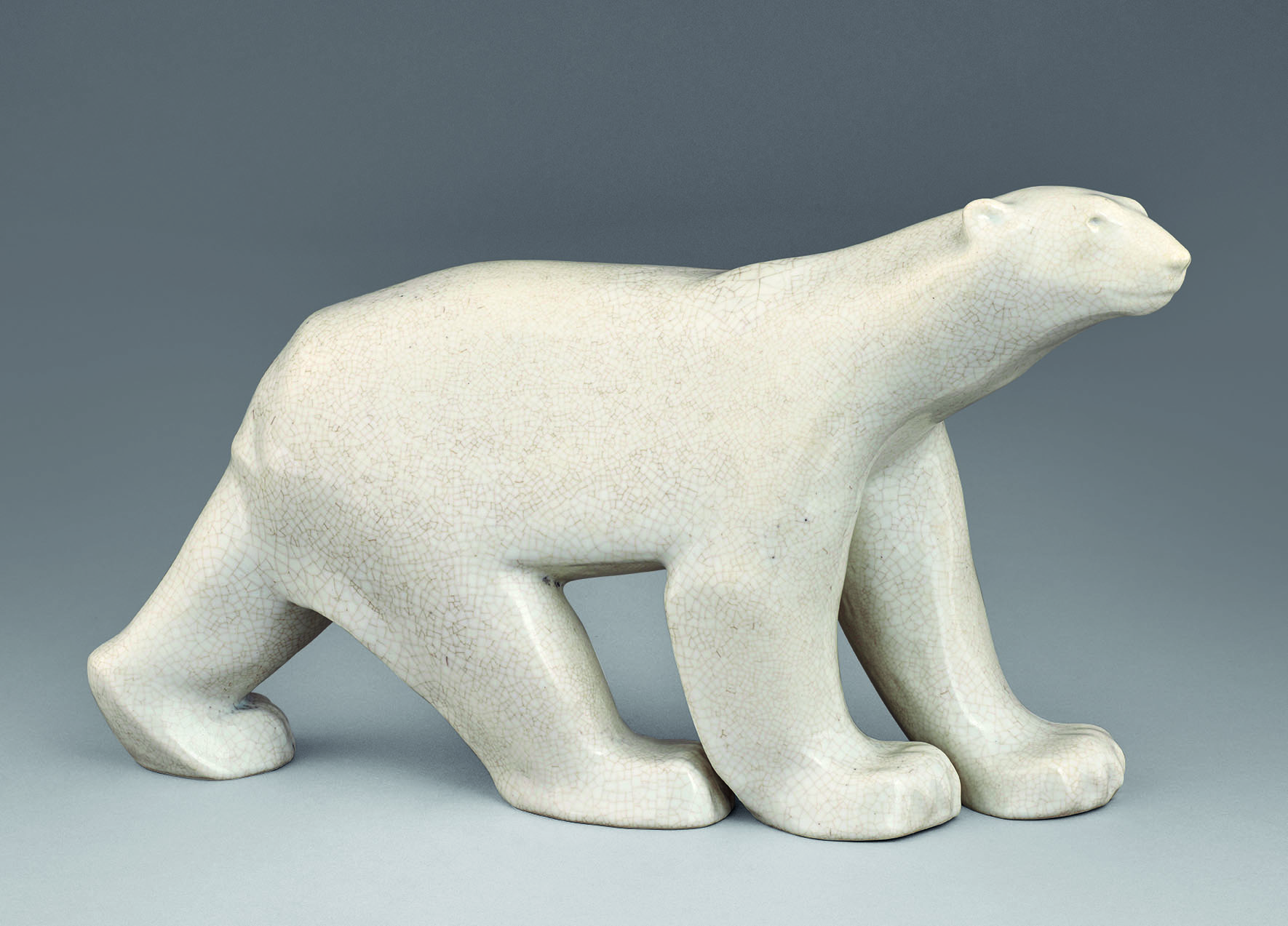
Glazed faience
Manufacture et Musée nationaux, Sèvres, MNC 17722
Photo © RMN-Grand Palais (Sèvres – Manufacture et musée nationaux) / Stéphane Maréchalle

Grès fin biscuit
Manufacture et Musée nationaux, Sèvres, MNS 2008.O.187
Photo © RMN-Grand Palais (Sèvres – Manufacture et musée nationaux) / Stéphane Maréchalle
© 2024 Artists Rights Society (ARS), New York / ADAGP, Paris
Chat (Cat)
Sculptors Jan and Joël Martel modeled this feline figure after their own cat. Its many iterations in multiple materials attest to the manufactory’s strategic shift in the interwar period under Lechevallier-Chevignard’s leadership: the freedom to explore new techniques and materials propelled the institution into the twentieth century.
Cat was the Martels’ first collaboration with the Sèvres Manufactory. The twin brothers, who never parted ways in art or in life, provided designs to the manufactory until 1938, signing their joint pieces with just one name, “Martel” or “J. Martel.”
Sculptors Jan and Joël Martel modeled this feline figure after their own cat. Its many iterations in multiple materials attest to the manufactory’s strategic shift in the interwar period under Lechevallier-Chevignard’s leadership: the freedom to explore new techniques and materials propelled the institution into the twentieth century.
Cat was the Martels’ first collaboration with the Sèvres Manufactory. The twin brothers, who never parted ways in art or in life, provided designs to the manufactory until 1938, signing their joint pieces with just one name, “Martel” or “J. Martel.”
Tin-glazed faience
Manufacture et Musée nationaux, Sèvres, MNC 25617
Photo © RMN-Grand Palais (Sèvres – Manufacture et musée nationaux) / Stéphane Maréchalle
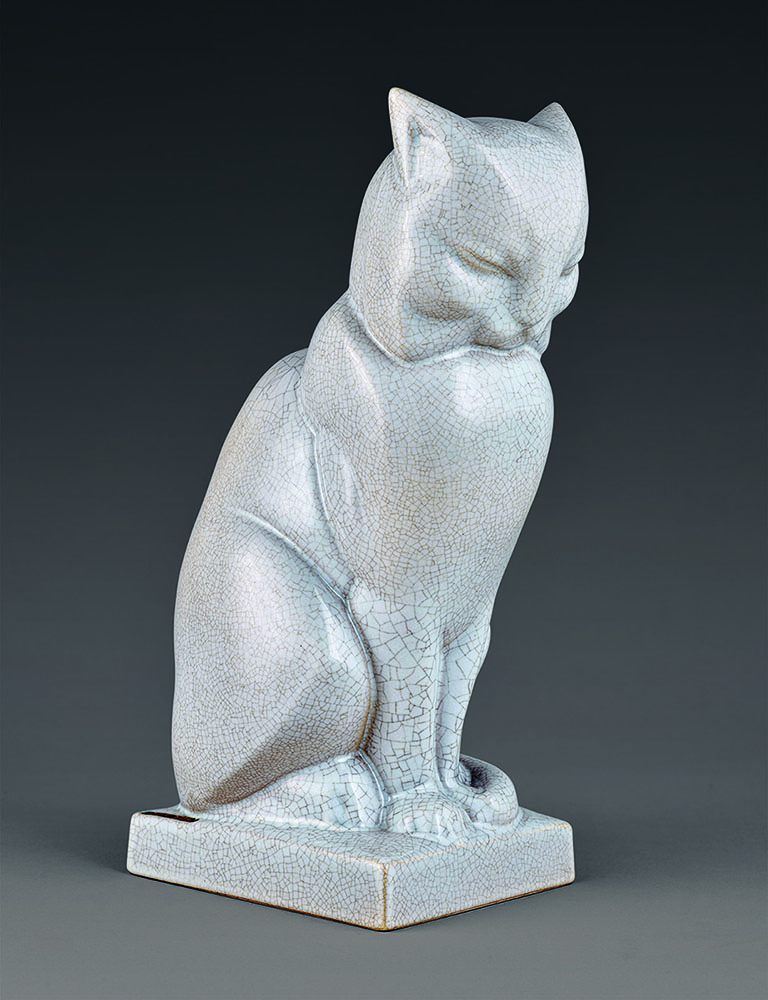

Tin-glazed faience
Manufacture et Musée nationaux, Sèvres, MNC 25617
Photo © RMN-Grand Palais (Sèvres – Manufacture et musée nationaux) / Stéphane Maréchalle
Jump to:


